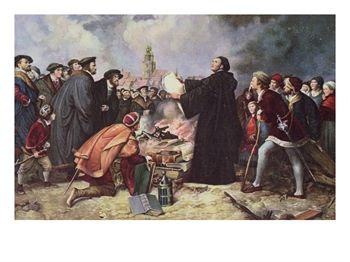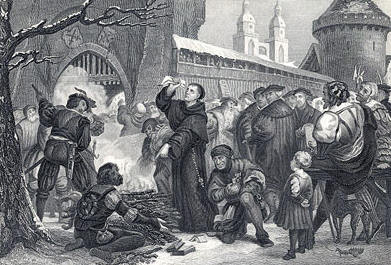The Papal Bull
"Divine Providence granted us the responsibility for caring for the Lord's [human] flock and with deep concern we are so compelled by relevant pastoral duties to at all times deviate all the faithful of our congregations from imminent perils to the body and from condemnation of the soul.

"Verily, although the abominable use of the duel, introduced by the devil to also gain condemnation of souls through the cruel death of bodies, was forbidden by a Decree of the Council of Trent [the council that from 1560-1563 formally began the Counter Reformation], up to now in many cities and places, so as to demonstrate their strength and courage at public spectacles, many individuals have not ceased engaging with bulls and other wild animals, frequently resulting in the death of men, in mutilation of members and endangering [human] souls.
"Therefore, considering such spectacles which are removed from Christian piety and charity, in which bulls and wild animals are challenged in circuses and plazas, and desiring to abolish such cruel and base spectacles of the devil and not of man, and to take measures for the salvation of souls as far as we are able with the power of God -- to each and every Christian prince, in any kingdom or enjoying any high position, whether ecclesiastical, civil or imperial, proclaimed by any name by any community or republic in perpetuity, by means of our constitution valid for the future, on pain of ipso facto excommunication and anathema, we interdict and prohibit the carrying out of spectacles of this nature in their provinces, cities, lands, castles and places where spectacles of this kind are realized, where bullfights and similar sports with other wild animals are permitted. We forbid military personnel and other persons from daring to join such spectacles, whether on foot or on horseback, to confront bulls or other animals.
"Ecclesiastical burial will be denied to anyone who is killed as a result of participating in such bullfights.
"We also prohibit churchmen, both regular and secular, with ecclesiastical benefices or constituted in Holy Orders, from participating in such spectacles, on pain of excommunication.
"We totally prohibit, we abrogate, annul and decide and declare forever invalid, null and useless all obligations, oaths and vows made by persons, communities or groups of persons to this date, or which may be made in the future, related to bullfights, even though they may have erroneously thought that they were honoring the saints or giving greater splendor to ecclesiastical solemnities and festivities. Such festivities must be celebrated with divine praise, spiritual joy and pious works and not with similar sports. ...

"And all venerable patriarch brethren, primates, archbishops and bishops and other high Church officials, by virtue of the holy obedience and on pain of divine judgment and eternal interminable condemnation, shall adequately divulge and seek to obey our letter in their own cities and dioceses, on pain of incurring ecclesiastical punishment and censure. ...
To ask Pope John Paul II to condemn bullfighting publicly, write to: His Holiness Pope John Paul II, Vatican City, Palazzo Apostolico, Rome 00187, Italy. Jean Thaler is the founder of Big Apple Vegetarians. Thanks to Adela Pisarevksy for help on this article.
 Bullfighting is certainly one of the best-known-although at the same time most controversial-Spanish popular customs. This Fiesta could not exist without the toro bravo, a species of bull of an ancient race that is only conserved in Spain. Formerly this bull's forebears, the primitive urus, were spread out over wide areas of the world. Many civilizations revered them; the bull cults on the Greek island of Crete are very well known. The Bible tells of sacrifices of bulls in honour of divine justice.Bulls also played an important role in the religious ceremonies of the Iberian tribes living in Spain in prehistoric times. The origins of the plaza de toros (bullring) are probably not the Roman amphitheatres but rather the Celtic-Iberian temples where those ceremonies were held. Near Numancia in the province of Soria one of them has survived, and it is supposed that bulls were sacrificed to the gods there.
Bullfighting is certainly one of the best-known-although at the same time most controversial-Spanish popular customs. This Fiesta could not exist without the toro bravo, a species of bull of an ancient race that is only conserved in Spain. Formerly this bull's forebears, the primitive urus, were spread out over wide areas of the world. Many civilizations revered them; the bull cults on the Greek island of Crete are very well known. The Bible tells of sacrifices of bulls in honour of divine justice.Bulls also played an important role in the religious ceremonies of the Iberian tribes living in Spain in prehistoric times. The origins of the plaza de toros (bullring) are probably not the Roman amphitheatres but rather the Celtic-Iberian temples where those ceremonies were held. Near Numancia in the province of Soria one of them has survived, and it is supposed that bulls were sacrificed to the gods there.



.jpg)
